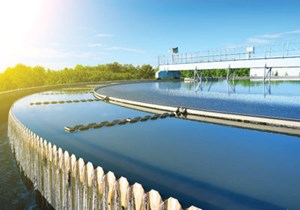Energy sector to generate income from wastewater via extraction technology
(UI) — Direct lithium extraction (DLE) could help exploration and production businesses generate income from wastewater, Rigzone reported.
This is supported by a recent analysis from Enverus Intelligence Research (EIR), which focuses on the economic and environmental possibilities of DLE in the Permian Basin. In the report, EIR predicted that wastewater in the Delaware Basin could create 225,000 tons of lithium carbonate a year and bring in an extra $19 billion in revenue.
The Inflation Reduction Act, which it notes brought in a 10% tax credit on mining and refining lithium, and federal support of up to $1 billion per year with the Defense Production Act both assist essential minerals projects in the United States, according to the research.
"Direct lithium extraction is the key to unlocking lithium security in North America," Graham Bain, vice president at EIR, told Rigzone. "DLE is more ecologically benign than conventional lithium mines, projects commission faster, and they have the potential to bring in billions of dollars for E&P firms through the extraction of lithium in wastewater."
Separately, EIR Senior Associate Stephen Pratt claimed that the Delaware Basin's permitting activity had shifted from the liquids-rich sections to the gas-weighted regions in an email to Rigzone earlier this month.
“The relative well-level economics in the gas-weighted areas generate comparable returns and value when compared to the core of the basin and should compete for capital for operators with regional optionality,” Pratt told Rigzone.
Based on the Texas Railroad Commission website, the Permian Basin is positioned in West Texas and the surrounding region of southeastern New Mexico. Its size is roughly 250 miles broad by 300 miles long, and it is made up of more than 7,000 fields in West Texas.
The Federal Reserve Bank of Dallas displayed the percentages on its website from January to June 2022, using data from the U.S. Energy Information Administration and internal calculations to arrive at the figures of 43.2% for oil and 16.7% for natural gas produced in the Permian.
Related News
From Archive

- Glenfarne Alaska LNG targets late-2026 construction start for 807-mile pipeline project
- U.S. water reuse boom to fuel $47 billion in infrastructure spending through 2035
- $2.3 billion approved to construct 236-mile Texas-to-Gulf gas pipeline
- Major water pipe break in Puerto Rico hits over 165,000 customers
- Potomac River Tunnel project enters construction phase beneath Washington, D.C.
- Pennsylvania American Water launches interactive map to identify, replace lead water service lines
- Trump's tariffs drive $33 million cost increase for Cincinnati sewer project
- Utah city launches historic $70 million tunnel project using box jacking under active rail line
- Tulsa residents warned after sewer lines damaged by boring work
- Fatal trench collapse halts sewer construction in Massachusetts; two workers hospitalized




Comments